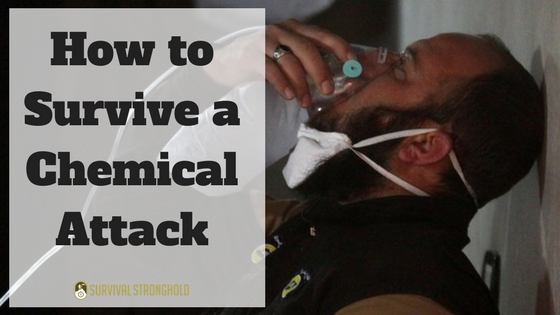In light of these uncertain times, it’s incredibly important to develop survival skills to match any scenario. Today, we’re going to focus on the basics of surviving an attack in which chemical or biological weapons have been used.
What is a chemical attack?
A chemical attack spreads toxic chemicals with the intent to cause injury or death. Many different chemicals can be used in an attack, some are even legal and available in typical grocery stores. Industrial chemical factories or vehicles used
to transport chemicals can also be hijacked. Harmful chemicals that could
be used in an attack include chemicals developed for use in warfare, toxic commercial chemicals or byproducts, and biological toxins such as ricin.
How could an attack take place?
An attacker will likely attempt to target as many people as possible, so places like office buildings, shopping malls, airports, or sports arenas are possible venues.
Common methods of delivery include:
- Ventilation systems of a building.
- Misting, aerosolizing devices, or sprayers.
- Passive release (container of chemical left open).
- Bombs, mines, or other explosive devices that release the chemical
- Improvised chemical devices that combine readily available chemicals to produce a dangerous chemical.
- Sabotage of plants or vehicles containing chemicals.
- Introduction of toxins in the food and water supply.
What can you do?
If a chemical attack occurs while you are inside a building or a closed space, you should:
- Remain calm, and do not panic. You cannot help yourself or others if you are not thinking rationally.
- Do whatever it takes to find clean air quickly. If you can exit the building without passing through contaminated areas, do so. If not, break a window to get fresh air and improvise an exit.
- Whether you think it’s contaminated or not, it’s safest to remove outer clothing and seal it up in a plastic bag.
- As soon as you’re safely out of the area, wash with soap (preferably liquid) and water. Thoroughly rinse your skin with water. Flush eyes with clean water if irritated.
- Put on clean clothes.
- Seek medical attention if there is any chance you have been exposed to the chemical, even if you have no immediate symptoms.
If a chemical attack occurs while you are outside, you should:
- Stay as far away as possible from any obvious plume or vapor cloud.
- Walk away from the site and into a building to shelter-in-place.
- Bring family or pets inside with you.
- Bring your bug-out bag, as well as phone chargers, a radio, and other necessities. Do so as quickly as possible.
- Lock all doors, close all windows, air vents, and fireplace dampers.
- Turn off all fans, heating, air conditioning, and ventilation systems.
- Go into a room with as few windows as possible. Seal the room to create a temporary barrier between yourself and the contaminated air outside.
- Seal all windows, doors, and air vents with plastic sheeting (or any available non-porous material) and duct tape.
- Watch TV, listen to the radio, or check the Internet often for official news and instructions as they become available.
In the event of an attack, instructions for evacuation will be given through the media. Do not attempt to evacuate unless instructed to do so, as moving through a toxic cloud could result in greater exposure than staying inside. The best course of action will be provided by emergency officials who may use computations from models to calculate the path and potential health effects of the toxic cloud.
Surviving a chemical attack will require you to tap into basic survival skills for any situation. Be sure to have your bug-out bags, emergency kits, and food storage in top shape. No matter what, the most important thing is to keep a level head in an extreme situation. You don’t need to be brave, you only need to keep your wits! Good luck!
If you liked this, you might also enjoy…
All Survival Preparedness Boils Down to This…
Is Doomsday Finally Upon Us?
Have You Considered Going Paleo? Read This First…


